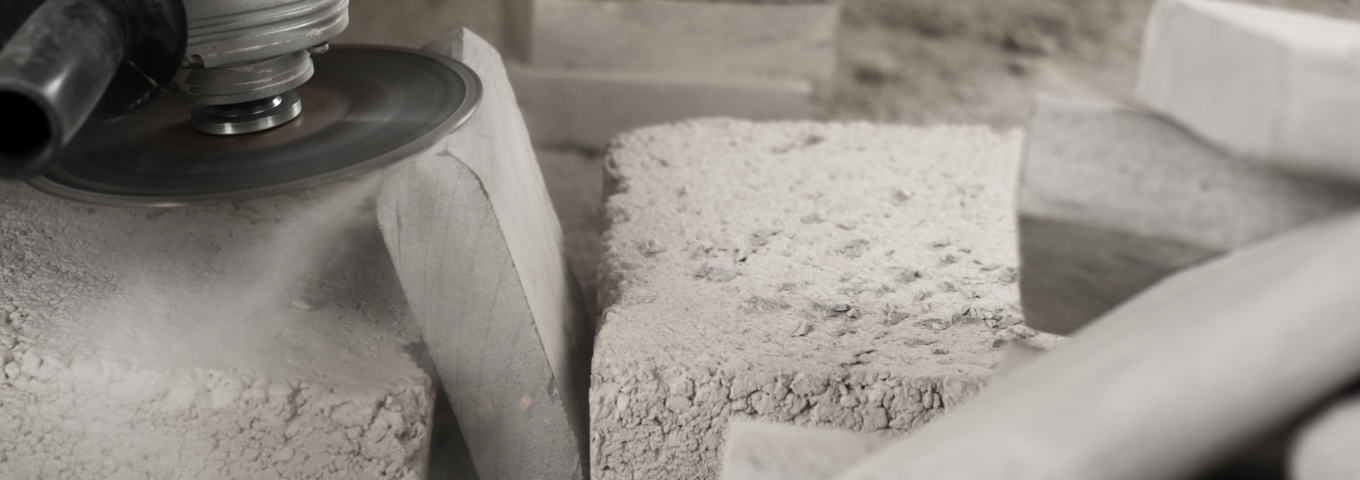Silica Dust: What Is It And Why Is It So Dangerous
According to Cancer Council, it is estimated that around 230 people develop lung cancer each year due to past exposure to silica dust at work.
Silica is a natural substance in most rocks, sands, stones, and clays. This harmful dust is produced when cutting, drilling, grinding, and polishing materials containing crystalline silica particles.
These tiny dust particles are 100 times smaller than a grain of sand and, once inhaled, can cause serious harm inside the lungs.
Who is most at risk of exposure?
The quantity of silica found in these substances varies depending on the stone being processed, however, people who work in the following industries are particularly at risk of exposure:
- Stone masonry
- Mining
- Quarrying
- Sandblasting
- Construction
- Pottery, ceramics and glass manufacturing
- Demolition work
- Sweeping and shovelling dry materials (usually in construction)
What are the risks associated with silica dust exposure?
If not appropriately controlled, silica poses a significant risk to workers’ health and can cause long-term health problems. Once silica dust gets inside the lungs, it causes swelling, which gradually develops into areas of hardened and scarred lung tissue. Once this tissue is damaged in this way, it doesn’t function properly – causing breathing difficulties and a lack of oxygen in the blood.
The most common illness associated with silica dust is Silicosis which is a long-term lung disease caused by continued exposure to large amounts of crystalline silica dust.
How can we prevent silica dust exposure?
Silica dust exposure is easily prevented with the implementation of a ventilation device such as an LEV system. The LEV system works by trapping the silica dust at the source to move it away from the workers. Once the harmful dust has been extracted from the workers breathing zone, it is deposited safely elsewhere.
If you manage a site that processes any of the materials listed above, then you are required by law to protect your employees from silica dust exposure and its associated risks.
If you are unsure of the steps to take to effectively protect your workforce from silica dust exposure or need advice on which extraction system is best for you, please give our engineers a call on 0116 2764522 or email sales@levengineering.co.uk

